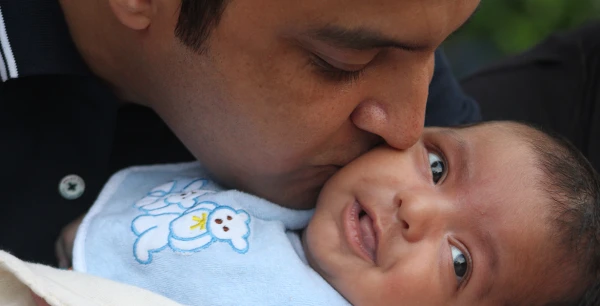Baby Sleep Aids and Negative Sleep Associations – Break The Habit!
What are baby sleep aids, or negative baby sleep associations? It is a connection a child makes with an action made by an adult to facilitate sleep (a sleep aid). It is referred to as “negative” because it will require the continued re-creation of the sleep association by parent or caregiver each time the child goes to sleep or wakes up. Some well known examples include having to nurse, bottle feed, walk, or rock your baby to sleep. If you’ve heard the term, “you can’t spoil a newborn”, that’s true. However, once a baby reaches about six months, you’ll want to eliminate these sleep crutches. Examples of baby sleep aids are:
- Nursing/feeding to sleep
- Rocking to sleep
- Lying with your baby until they fall asleep
- Patting, cuddling, or other parent-involvement until the baby falls asleep
Nursing to Sleep can be a Sleep Aid
Nursing or bottle feeding you baby to sleep is not always a problem. If it is the only way you child can fall asleep, or they must suckle to fall back asleep at night, you might have an issue. Feel like a human pacifier? Is your baby often more focused on suckling than actually feeding? Try to begin to break the negative sleep association that goes along with nursing or bottle feeding. Once your child learns that feeding does not mean sleeping, they will more naturally wean themselves from the middle of the night feedings because you have changed their sleep association. Check with your pediatrician to make sure your child is ready to sleep through the night without a feeding before discontinuing night feedings.
How to Stop Using Feeding as a Sleep Aid
Here’s how to get started: If, for example, your baby’s pattern is to drink for 20 minutes then suckle on and off while dozing for 20 minutes, then try cutting in half the amount of time that you are nursing to a total of 20 minutes. Unlatch the baby when she has stopped drinking and has begun to fall asleep. Burp, swaddle, kiss, sing, or briefly rock, then put baby in bed while drowsy but still aware she is being put down. Sit next to the crib and offer verbal and physical reassurance. When she wakes during the night for a feeding, quickly attend to her. If she falls asleep while nursing, unlatch her and return her to bed. Focus on putting your child down drowsy but wakeful at bedtime and at least one nap for 7-10 days.
If you and your pediatrician have decided that your child does not physically require feeding during the night, then when she awakens during the night, go and sit next to the crib. Do this until she falls asleep at each awakening. Some parents find that sleeping on the floor of their child’s room for the first few nights make them and their child feel more comfortable. Move your seat from next to the crib on the first night to gradually moving toward and out into the hallway in three day increments. If your child is used to being fed by one parent during the night, I would suggest that the other parent go in to offer reassurance.
Walking or rocking to sleep is also a negative sleep association.
It becomes a problem if your baby or child awakens when you stop walking or rocking and/or you need to walk or rock them each time they awaken during the night. Follow the same guidelines for nursing or bottle-feeding to bed except begin by shortening the amount of time you walk or rock them to sleep. For example, if you walk or rock your child for 30 minutes until he is completely asleep, try 20 minutes for 2-3 days and then 15 minutes for 2-3 days, and the 10 minutes, and so on. Work slowly towards putting him down in his bed/crib in a drowsy but wakeful state at bedtime. Then work on all other night awakenings and the naps. Follow the same guidelines mentioned above for crib or bedside reassurance.
If you decide to pick the baby up when he is crying in the crib, pick him up only long enough for the baby to calm, and then put him back down and continue to be reassuring. Many babies like: to be swaddled tightly (This feels like being held.); to have the bumper of their crib touch the top of their heads; to have their body gently rocked with your hand while they are lying down in their crib. Keep walking and rocking within the bedroom so the child begins to create positive associations with his bedroom and sleep.
Remember, the habits you begin to teach your child at this early age set the stage for sleep patterns kept long into adulthood! What better gift could you give your child then a lifetime of peaceful, restorative sleep? Celebrate the independence of your child falling to sleep on her own! Sweet dreams!




